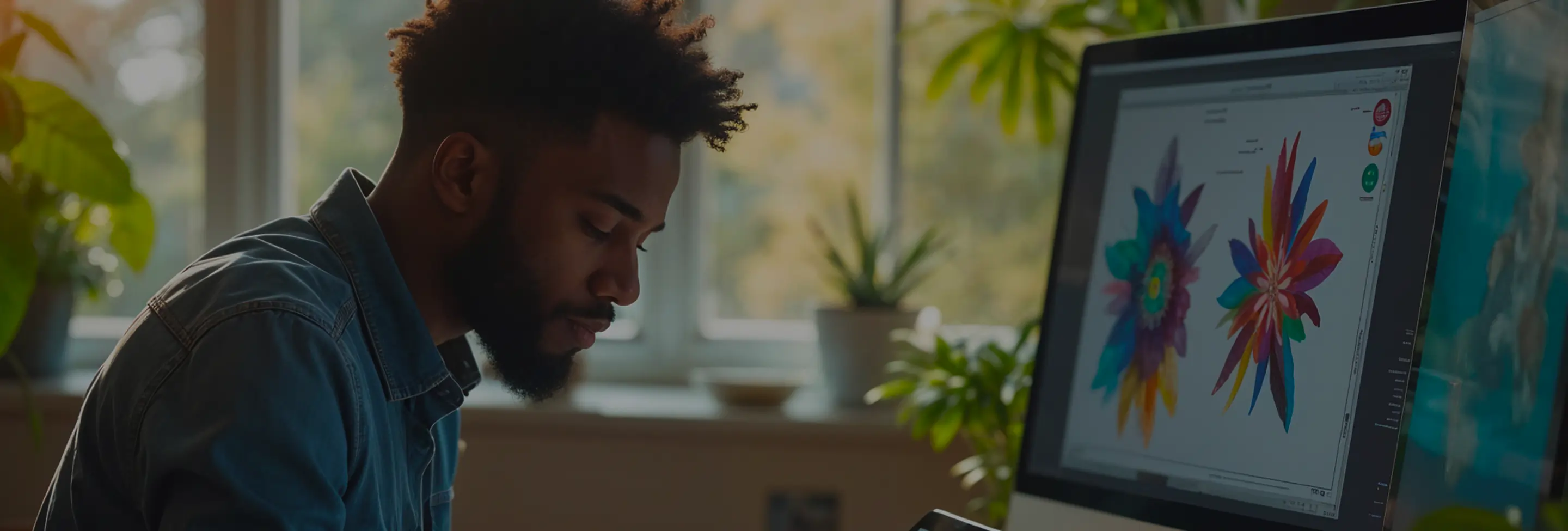
In analyzing over 2,000 graphic design project proposals, we identified the top 12 flat rate graphic design questions that account for 85% of client and designer interactions. These questions address critical aspects of flat rate pricing, project scope definition, and quality assurance, providing valuable insights for both clients seeking design services and designers offering them.
Answer:
Flat rate graphic design refers to a pricing model where designers charge a fixed fee for a specific set of services or deliverables, regardless of the time spent on the project. Unlike hourly billing, flat rate pricing provides transparency and predictability for both clients and designers.
Example:
A designer might offer a flat rate of $500 for a complete brand identity package, including logo design, business cards, and social media graphics.
Common Misconception:
Flat rate pricing isn’t flexible. In reality, it can accommodate various project scopes by clearly defining deliverables and establishing boundaries to prevent scope creep.
Actionable Solution:
Define all project elements upfront and include clear terms in the contract to manage expectations and ensure both parties are aligned.
Answer:
Opting for flat rate pricing offers several advantages:
Example:
A client with a fixed marketing budget prefers a flat rate to allocate funds without worrying about hourly fluctuations.
Actionable Solution:
Evaluate your project needs and financial preferences to determine if flat rate pricing aligns with your goals.
Answer:
Determining flat rate pricing involves several factors:
Example:
A simple logo design may be priced at $300, while a comprehensive branding package could command $1,200.
Actionable Solution:
Create a pricing formula that considers all relevant factors, ensuring profitability while remaining competitive.
Related Question: How to Scope a Graphic Design Project for Flat Rate Pricing?
Answer:
A comprehensive flat rate quote should include:
Example:
A quote for a website design might include homepage design, up to five subpages, two rounds of revisions, and a 30-day support period.
Highlight:
Ensure all possible aspects are covered to prevent misunderstandings and protect both parties.
Actionable Solution:
Use a standardized template for quotes that covers all essential elements, customizing it to each project’s specifics.
Answer:
Defining project scope involves:
Example:
For a brochure design, specify the number of pages, types of graphics, and content revisions included in the flat rate.
Common Misconception:
A fixed price doesn’t allow for changes. In reality, clear scope definitions can accommodate minor adjustments while maintaining the agreed price.
Actionable Solution:
Incorporate a change request process in your contract to handle additional work beyond the initial scope.
Answer:
When additional work is requested:
Example:
If a client asks for an extra logo variant, outline the additional cost and timeline before starting.
Troubleshooting Tip:
Maintain open communication to manage expectations and prevent conflicts over additional work.
Actionable Solution:
Include a clause in your contract for handling out-of-scope requests, detailing how changes will be managed and billed.
Answer:
Typically, 2-3 revisions are included in a flat rate to balance client satisfaction and designer efficiency. This allows for initial feedback and necessary adjustments without prolonged project timelines.
Example:
A logo design package might include three revision rounds to refine the concept based on client input.
Highlight:
Clearly state the number of revisions in the contract to set expectations and avoid excessive back-and-forth.
Actionable Solution:
Define revision limits in your proposals and communicate additional revision costs upfront.
Answer:
Handling revisions professionally involves:
Example:
If a client requests color changes, discuss how the new palette fits the brand identity and make the necessary adjustments promptly.
Actionable Solution:
Create a revision process that includes feedback timelines and clear communication channels to streamline updates.
Answer:
Key challenges include:
Example:
A designer might struggle if a client continuously requests more revisions than initially agreed.
Actionable Solution:
Set clear boundaries, use comprehensive contracts, and communicate openly to manage challenges effectively.
Answer:
Preventing scope creep involves:
Example:
Include a clause in your contract that specifies additional work will incur extra charges, discouraging clients from requesting excessive changes.
Troubleshooting Tip:
Document all client communications and changes to enforce agreements if disputes arise.
Actionable Solution:
Use project management tools to track tasks and changes, ensuring adherence to the defined scope.
Answer:
To maintain profitability:
Example:
If designing a website typically takes 40 hours and your hourly rate is $50, set a flat rate that covers this time plus a profit margin, such as $2,500.
Highlight:
Underestimating time and costs can lead to reduced profitability and burnout.
Actionable Solution:
Conduct thorough project assessments and regularly analyze your pricing strategy to ensure it remains profitable.
Answer:
Enhance flat rate packages by offering:
Example:
A branding package might include logo design, color palette selection, and a brand style guide, providing clients with a cohesive identity.
Actionable Solution:
Create tiered packages that offer varying levels of service, allowing clients to choose based on their needs and budget.
Answer:
Transitioning involves:
Example:
Begin by offering a flat rate for specific services, such as logo design, while maintaining hourly rates for more complex projects.
Actionable Solution:
Gradually introduce flat rate pricing to existing clients, highlighting its advantages and ensuring a smooth transition.
Answer:
Effective tools include:
Example:
Using Asana to manage project milestones and Trello boards to track design iterations ensures transparency and organization.
Actionable Solution:
Integrate these tools into your workflow to enhance efficiency, communication, and project management.
Flat rate graphic design offers a streamlined and predictable pricing model that benefits both clients and designers. By understanding key aspects such as pricing determination, scope management, and value addition, designers can create effective flat rate packages that meet client needs while ensuring profitability. Addressing common challenges with proactive strategies and leveraging the right tools further enhances the success of flat rate graphic design projects.




Subscribe to our newsletter to receive $100 off your first month of Tapflare's flat rate unlimited design and development service. Your coupon code will be sent to your email.